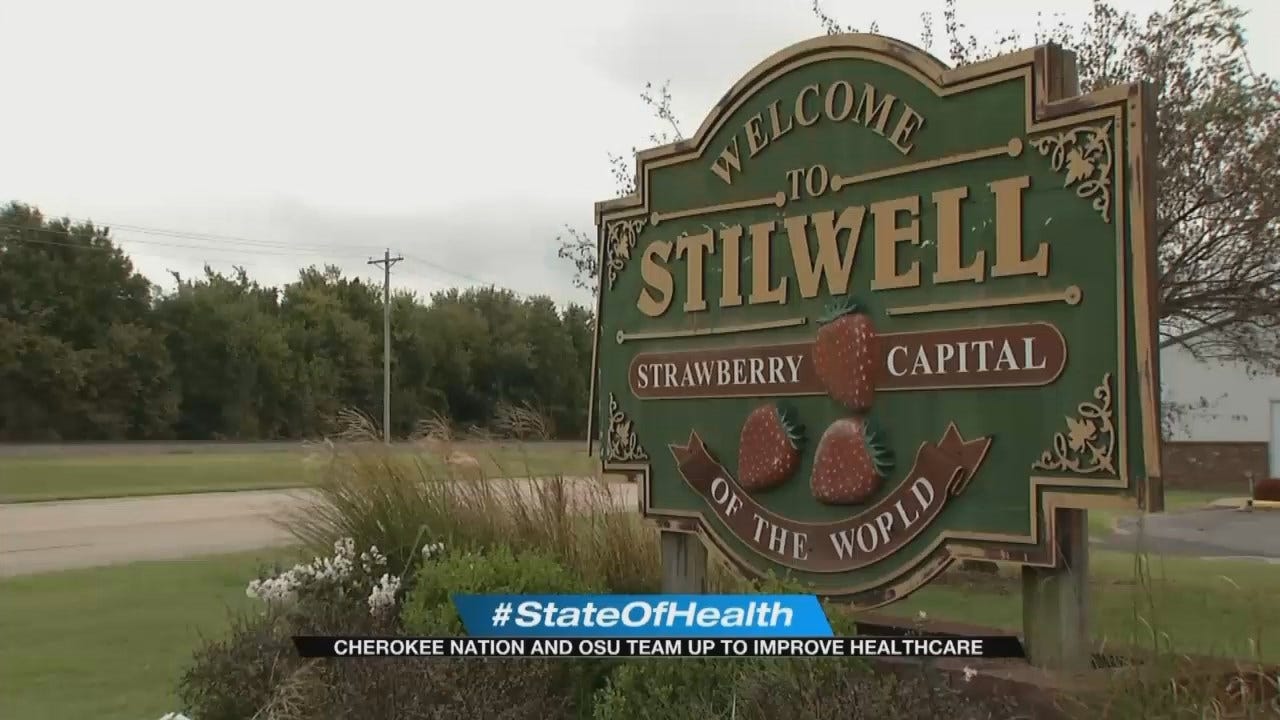Oklahoma Town Struggles With Lowest Life Expectancy In Nation
<p>On the heels of a shocking announcement, people in the Cherokee Nation are about to get a big dose of good news.</p>Wednesday, October 24th 2018, 12:26 pm
On the heels of a shocking announcement, people in the Cherokee Nation are about to get a big dose of good news.
A historic partnership between the Cherokees and Oklahoma State University could reverse a devastating trend that is cutting lives short in the Cherokee Nation.
Perched on the eastern edge of Oklahoma, Stilwell was the end of the line for the trail of tears.
Born at the crossroads of history, this Adair County town of 4,000 has never quite transcended that sad legacy.
And this fall, a new chapter of misery. A first-of-its-kind study by the National Center for Health Statistics finds Stilwell, Oklahoma with the lowest life expectancy in the entire nation.
The average age of death is 56.3 years, almost an entire generation lower than the national average.
“At first I was in shock and then, as a mother, I was just worried,” said Dakota Thompson.
Thompson has every intention of keeping her two-year-old son Sloan safe and healthy, but she also knows that statistically, he's growing up in an area with a lower life expectancy than Uganda.
“I just can't help but wonder what's going on in our community and how can we get to the bottom of it to help save the next generation,” said Thompson.
“It’s shocking, honestly,” said Dr. Adam Sprankell.
Dr. Sprankell is the medical director of Stilwell's Wilma Mankiller Health Clinic.
“But it also exemplifies why the Cherokee Nation has had a commitment to this region for so long and continues to do so,” said Sprankell.
In Stilwell, that commitment has had visible results.
The gleaming new health clinic near the Arkansas border has doubled in size in the past three years and another expansion is on the way.
More specialists are coming to town and in the past year, the clinic has hired five new doctors. But as it turns out, it's only the beginning.
“This is really a historic moment not just for OSU and the Cherokee Nation but for the United States,” said Dr. Kayse Shrum
Next week, Oklahoma State University and the Cherokee Nation will announce a first-of-its-kind partnership, a new medical school with 200 doctors in training to be housed in Tahlequah's Hastings hospital.
“It is the very first time there will be a medical school in Indian country,” said Chief Baker.
For Cherokee Chief Bill John Baker, the announcement is the crowning achievement of a $100 million push to improve health services for the Cherokee people.
In recent years, nine medical clinics across Eastern Oklahoma have been built or expanded and in Tahlequah, a massive new clinic is under construction.
“We've got the facilities now and now with this medical school coming through, I believe we'll grow enough of our own doctors to fill the system,” said Chief Baker.
Both OSU and the Cherokee Nation hope the medical school will help alleviate the critical shortage of primary care doctors facing rural Oklahoma.
But beyond that, the Cherokees plan to offer scholarships to encourage tribal members to attend and hope other tribes will do the same.
“Having Native American doctors taking care of Native Americans is kind of in our DNA,” said Chief Baker.
“I think of the medical school as the stone being thrown in the water; the ripples just aren't going to stop for a long time,” said Dr. Shrum.
Chief Baker is confident those ripples will find their way into communities like Stilwell and ease the worries of young families still proud to call this land their home.
“When we get done, it is going to revolutionize healthcare in the Cherokee Nation for the next seven generations,” said Chief Baker.
OSU just received accreditation for the new medical school in August, so there are lots of details to work out.
But they expect to have their first class of 50 medical students in Tahlequah's Hastings hospital in the fall of 2020.
More Like This
October 24th, 2018
April 7th, 2025
Top Headlines
April 7th, 2025










